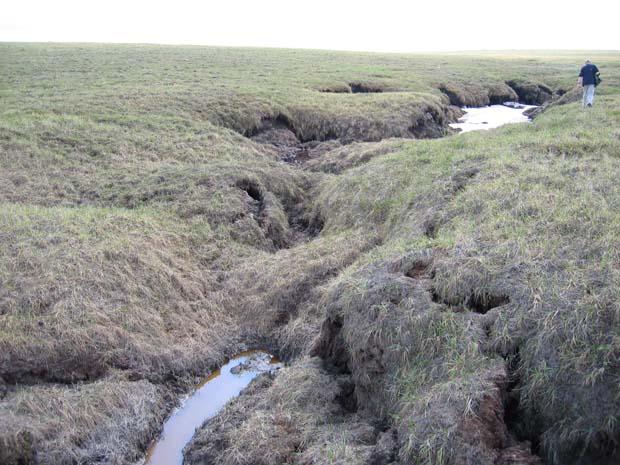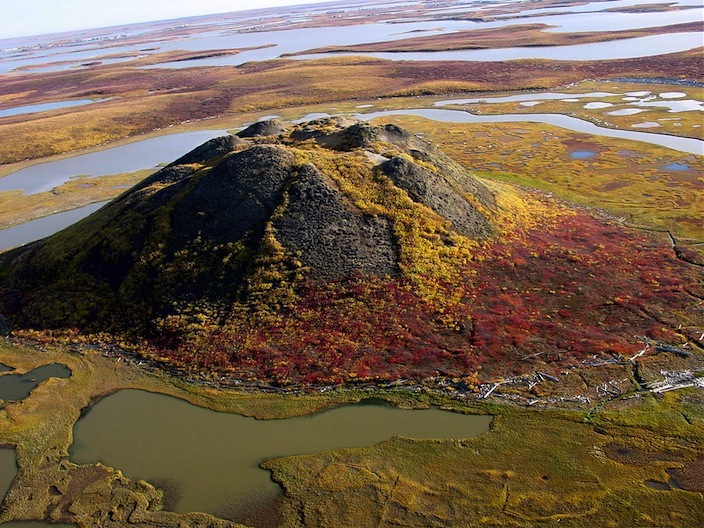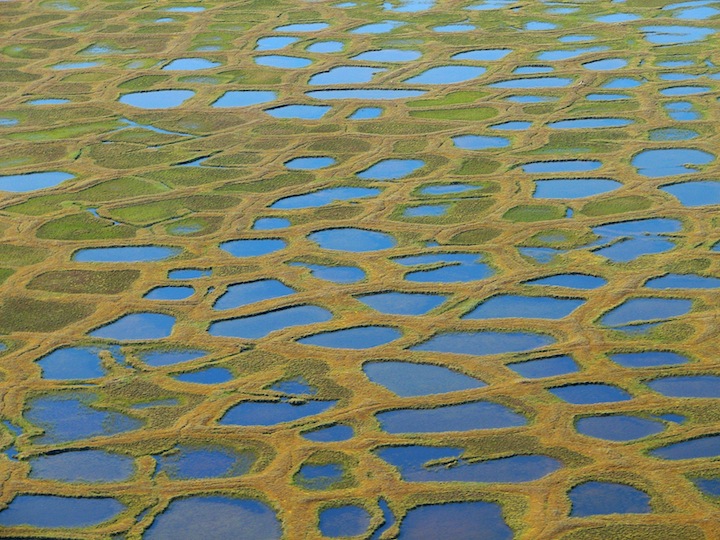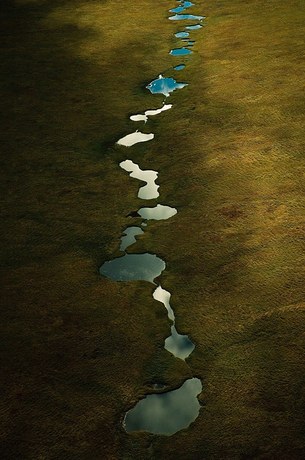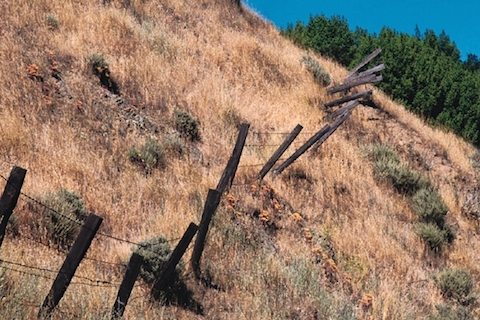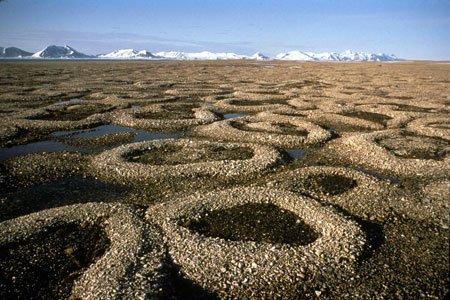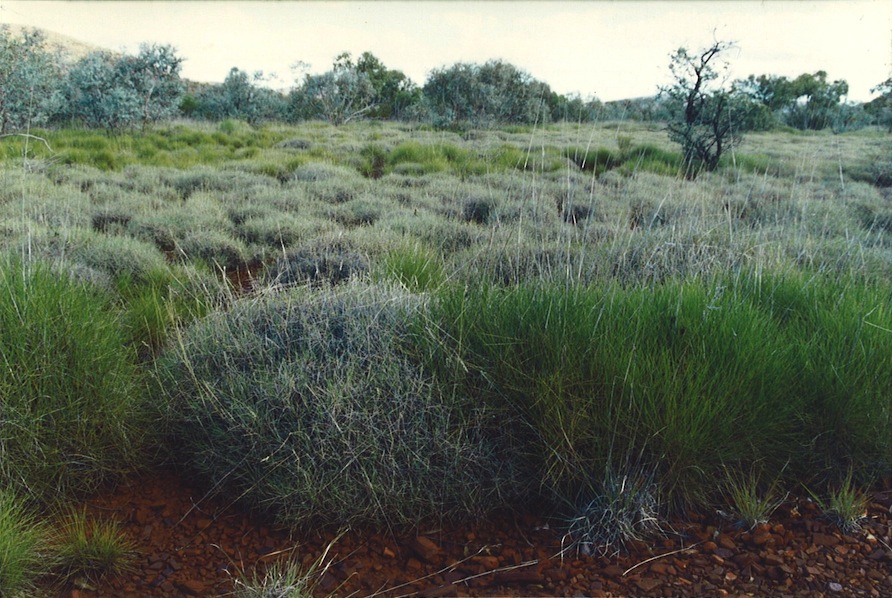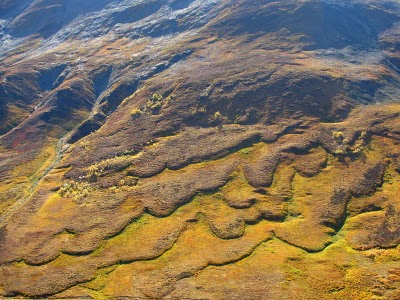The following section displays various surface and seasonal features common to permafrost landscapes. For permafrost ice types, see Types Section. Hover over figures for image credit.
Thermokarst: Landscapes that occur as a result of melting ice rich permafrost. The ice rich ground is very robust when frozen and has the ability to support a variety of land covers. Since water is most dense at 4°C, when it begins to freeze (0°C) it expands. For this reason, when permafrost ice melts, the landscape collapses from the sudden decrease in volume. This land failure creates a thermokarst environment of holes, trenches, slumps, ponds and uprooted vegetation.
Pingos: Uplifted frozen hills of permafrost occurring in both the continuous and discontinuous permafrost zones. The ground becomes uplifted into dome shaped hills through the freeze of liquid groundwater (closed-system pingo) or by liquid water seeping into a permafrost area and elevating the surface once solidified (open-system pingo). A cracked ridge often forms on top during the freeze process.
Polygons: A type of patterned ground formed from the action of ice wedge development (See Ice Types section). As multiple ice wedges form, surrounding ground is uplifted through seasonal expansion (freeze) and contraction (melt), creating channels at the ice wedge location. Seasonal melting produces small ponds within this landscape.
Beaded Stream: A route of small, round connected water ponds created from melting of ice wedge surfaces. Each pond overlies an ice wedge formation (See Ice Types section).
Frost Creep: The displacement of soil on a hillslope from continuous freeze-thaw cycles. When permafrost is frozen, the ground surface moves horizontally away from the slope; when thaw occurs, the ground features continue to rearrange.
Stone Circles: Permafrost features formed over hundreds of freeze cycles. As the underground water freezes, larger rocks are heaved upwards into concentric circles. When circles connect, they create a mesh pattern, called Sorted Net Permafrost.
Stripes: Permafrost features created from the influence of freeze cycles. Similar to stone circles, as underground water freezes, rocks are sorted by size. In this case, they are sorted in vertical lines across the landscape.
Hummock/Mound: A permafrost driven generation of small heaps of vegetation covered earth. Hummocks are created either from ice heave or continuous ice growth within the mounds. A field of hummocks are home to two vegetation types: one tolerant environment on top of the mounds, and another less tolerant in the trenches between.
Solifluction: A permafrost features formed from the detachment and slow downslope movement of the active layer (surface layer of permafrost that melts seasonally).
Definition information provided by the following sources: National Park Service, University of Alaska Anchorage (2004), University of Guelph, National Geographic (2007) and US Army Corps of Engineers (2012).
References
Permafrost Links
Material on this page was provided by Maren Pauly, Department of Geography, University of Waterloo
Last updated on 06/11/2017

